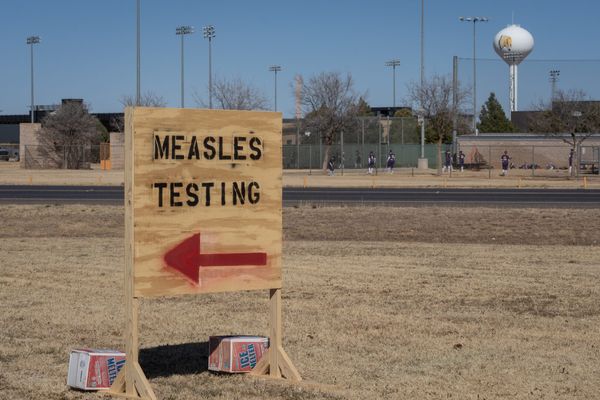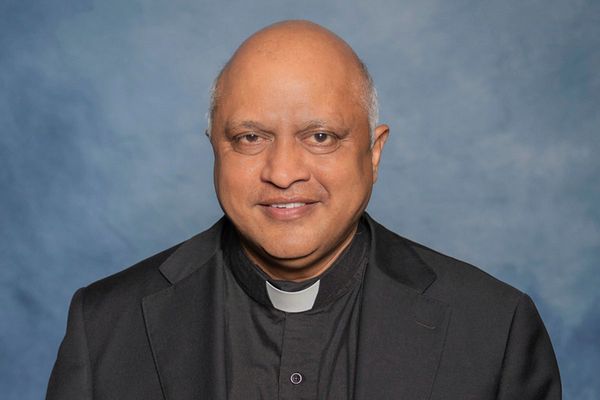
Stacey Abrams, Georgia Democrats' nominee for governor, is launching an intensive effort to get out the vote by urging potential supporters to cast in-person ballots the first week of early voting as she tries to navigate the state’s new election laws.
The strategy, outlined to The Associated Press by Abrams’ top aides, is a shift from 2018, when she spent generously in her first gubernatorial bid to encourage voters to use mail ballots. It also moves away from Democrats' pandemic-era emphasis on mail voting, a push that delivered Georgia’s electoral votes to President Joe Biden and helped Raphael Warnock and Jon Ossoff win concurrent U.S. Senate runoffs to give Democrats control of Capitol Hill.
Republicans, including Abrams’ opponent, Gov. Brian Kemp, answered in 2021 with sweeping election changes that, among other provisions, dramatically curtailed drop boxes for mail ballots, added wrinkles to mail ballot applications and ballot return forms, and made it easier to challenge an individual voter’s eligibility. But it also expanded in-person voting.
“It’s self-evident we have to have a big early vote in-person,” said Abrams campaign manager Lauren Groh-Wargo, arguing the new mail ballot procedures make it risky for Democrats to rely too heavily on that option. “What’s not self-evident,” Groh-Wargo continued, “is how the hell you do that.”
Primary elections this midterm season have suggested a national decline in mail balloting, which spiked in 2020 because of COVID-19. Still, Abrams’ approach, which is shared by some liberal voting rights activists, represents a pivot from Democrats’ pre-COVID tactics and demonstrates how the left intends to try to maximize their votes in jurisdictions where Republicans remain in control of election procedures.
Abrams’ push, timed to begin a month before early voting begins, comes with some polls suggesting she trails Kemp slightly after losing their first matchup by about 55,000 votes out of 4 million.
Beginning Sunday, the Democrat’s campaign will ask supporters to commit to vote at in-person polling sites during the first week of early voting, which opens Oct. 17. The campaign will send digital commitment cards to targeted supporters via email and texts, with direct mail to follow. Field workers will ask voters to fill out commitment cards, with 2 million households slated for in-person visits. And the Abrams campaign will make pledge cards a standard part of its campaign events.
The week-one commitment, with a voter going beyond simply committing to cast a ballot before early voting ends on Nov. 4, is intentional. After adding an individual’s commitment to their profile in the campaign’s voter database, Abrams’ team will use publicly available turnout data to identify anyone who hasn’t followed through or had trouble casting a ballot. Anyone denied early ballot access will be routed to Georgia Democrats’ voter protection operation, with “lots of time left” to rectify the situation, Groh-Wargo said.
She said that’s better than the alternative options: having mail ballots rejected or waiting until Election Day and, under new laws, not getting a provisional ballot until late on Nov. 8, with no other recourse.
Georgia Democrats aren’t abandoning mail voting altogether. The state party and Abrams campaign together have targeted 500,000 reliable Democratic voters to cast mail ballots. They were identified based on their long history of using that method, rather than anything they did from 2018 forward when Democrats ratcheted up an emphasis on a mail and absentee process that Georgia Republicans had dominated previously.
In her first campaign against Kemp, Abrams took the unusual step of sending nearly completed mail ballot applications to 1.6 million Georgians her campaign identified as sporadic but Democratic-aligned voters — a tactic that exceeded even the most ambitious one-time mailers sent by earlier Democratic presidential campaigns. With a cost approaching seven figures, Abrams knew it would be inefficient; such applications generally coax participation from less than 10% of participants.
But the campaign identified tens of thousands of new voters from the effort. Abrams ended up outpacing Kemp in mail support by 53,709 votes, though she lost the early in-person vote by 19,895 and the Election Day vote by nearly 94,000. She won about two-thirds of 10,000-plus provisional ballots. She ended up about 19,000 votes short of forcing a runoff, since Georgia law requires a majority to win statewide offices.
Republicans 2021 voting overhaul prohibits the kind of mailer that Abrams sent, allowing only blank state-issued forms. Those now require voter ID — a state ID number or photocopy of the ID — and a voter’s birthday. Much of the information must be repeated with the returned ballot, creating the possibility of more mismatches that could result in the ballot being tossed out.
Groh-Wargo wouldn't offer a specific early voting turnout goal. But she said Abrams’ 2018 early in-person support — 930,131 of her 1.92 million votes — fell short of internal targets. Yet Abrams' overall total, even in defeat, exceeded any Democrat in Georgia history at the time. It was eclipsed by Biden, Warnock and Ossoff as the overall electorate continued to grow.
“All of that makes early voting that much more important,” said Nsé Ufot, who now leads the New Georgia Project, a voting rights group Abrams founded when she was a young state lawmaker.
Ufot said her outlet and others like it are pressing early in-person voting in their outreach efforts. New Georgia Project, she said, has registered 30,000 new voters and knocked on 1.3 million doors since the 2021 Senate runoffs, with 1 million more planned before Nov. 8.
Redesigning voter turnout plans, Groh-Wargo said, doesn’t change Democrats’ underlying necessity to expand the electorate if they hope to win in a historically conservative-leaning state like Georgia. That means many of the 1.6 million households who got Abrams’ mail ballot application in 2018 and didn’t vote will still be getting a visit about early in-person voting.
That expansion strategy, Ufot said, still runs into skepticism among some Democratic donors. “It’s so clear that people have no idea how 2020 happened or 2018 for that matter,” Ufot said.
Behind-the-scenes pressure has intensified, Ufot said, with polls conducted since the beginning of July suggesting a tight race or narrow Kemp lead. Groh-Wargo said she hears the narrative of Abrams “struggling.” She acknowledged a “nasty environment” for Democrats given global inflation and Biden being less popular in Georgia than when he won the state. But the worry, she said, remains rooted in misunderstanding Abrams’ path.
“A lot of our constituencies are ‘persuasion voters,’” Groh-Wargo said. That doesn't mean swing voters, she said, because they're not choosing between Abrams and Kemp — they're deciding whether to back Abrams or not vote at all.
Still, Ufot said, the dynamics put enormous pressure on Abrams and her campaign to succeed so the left's donor base doesn't start short-changing voter turnout networks she said are necessary to tap diverse electorates in traditionally Republican states.
“This is going to be a game of inches,” she said. “We just have to widen the aperture to see what’s at play here.”







